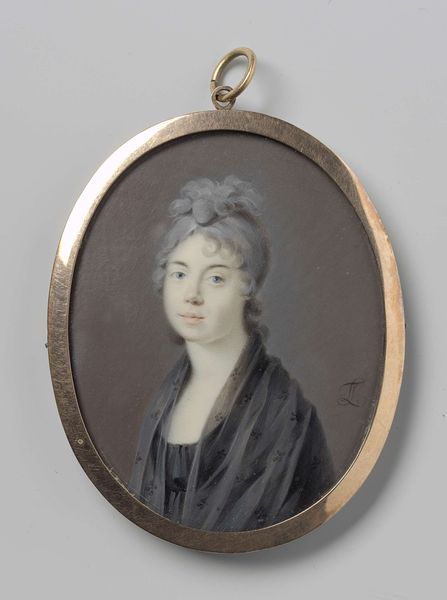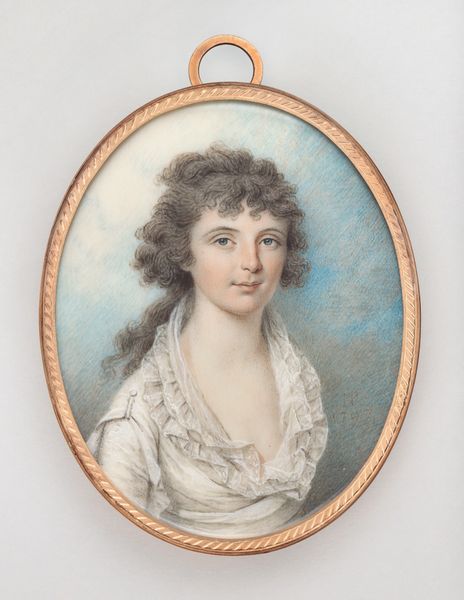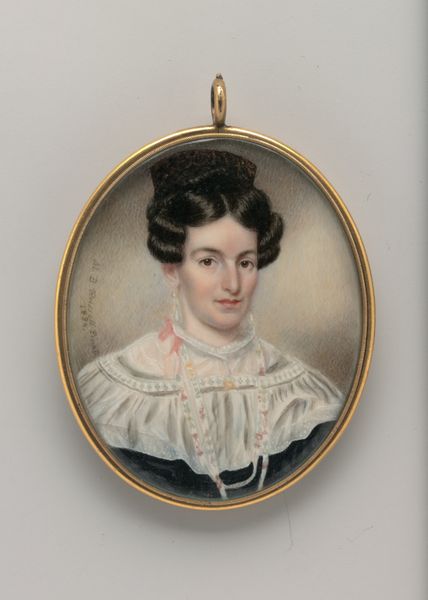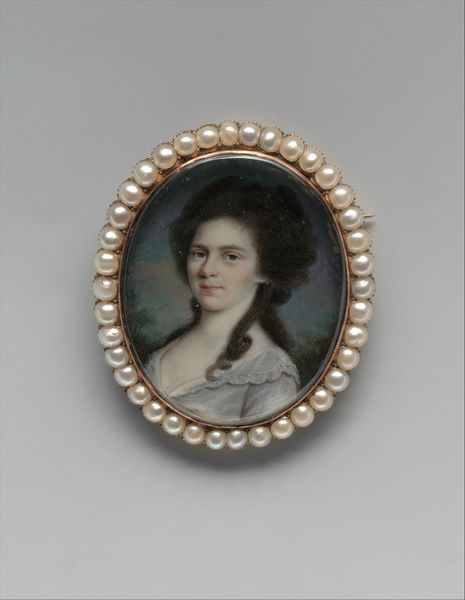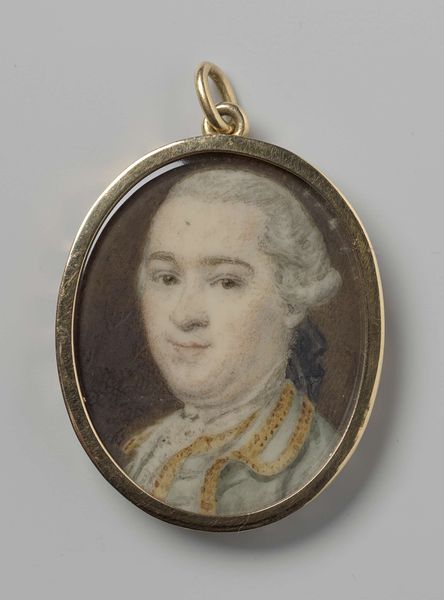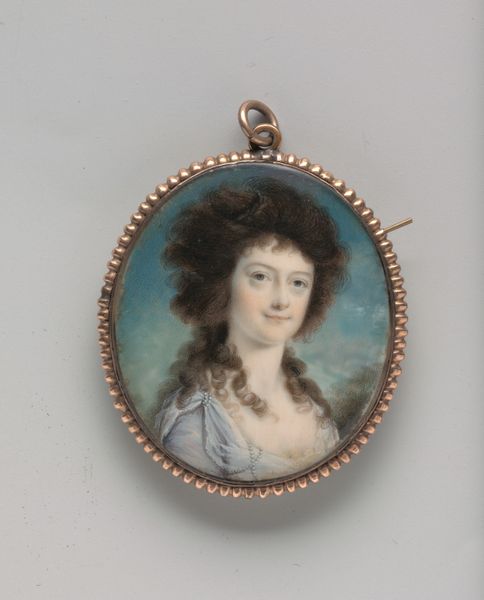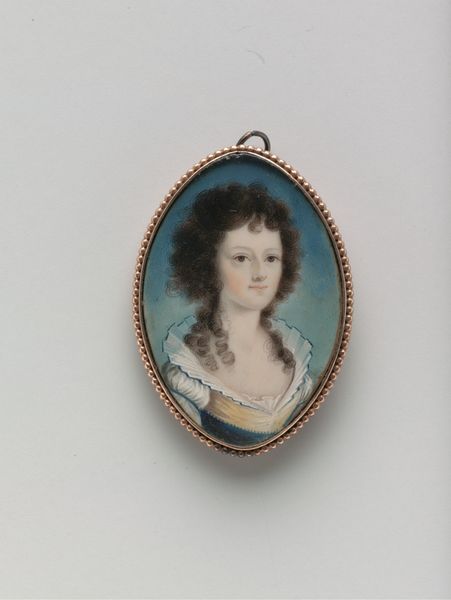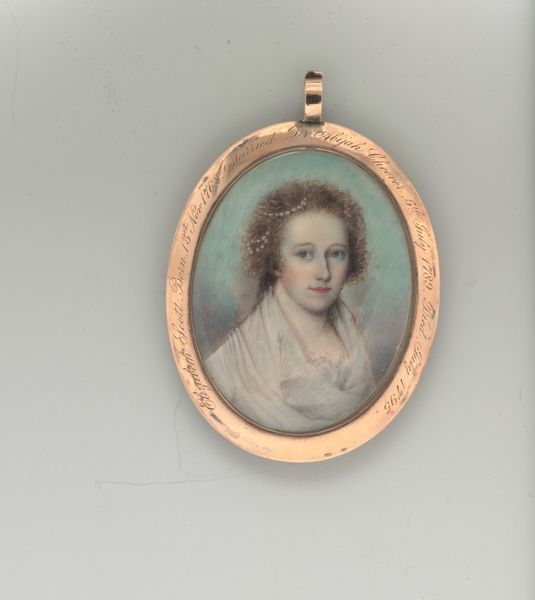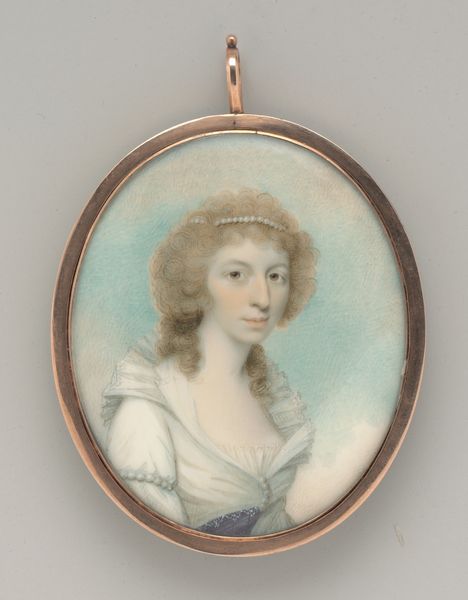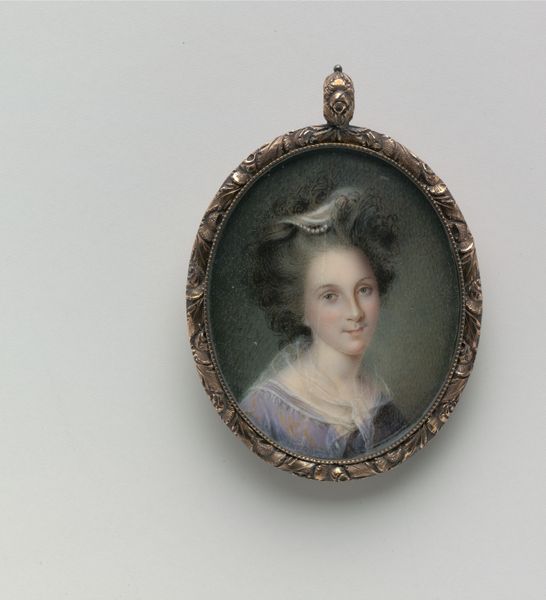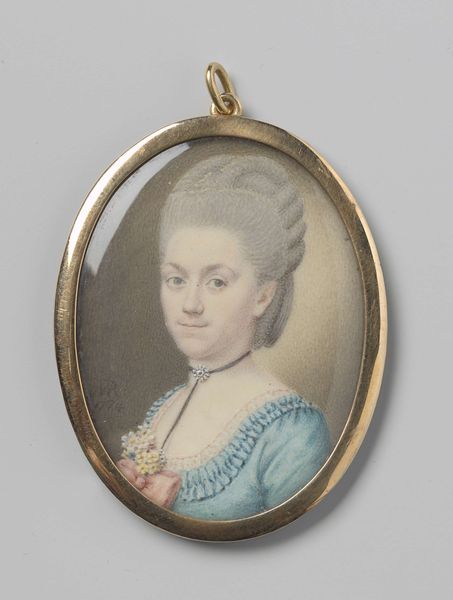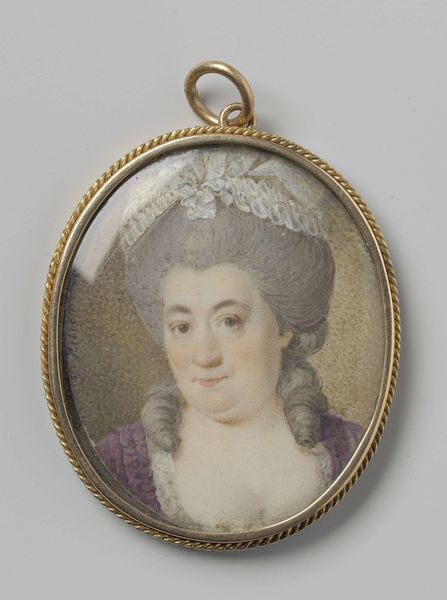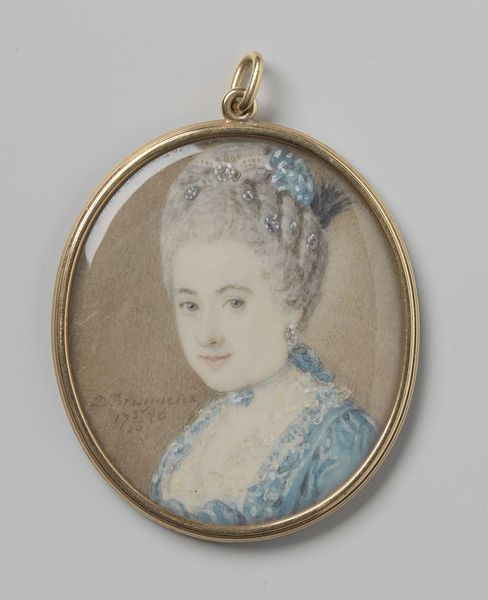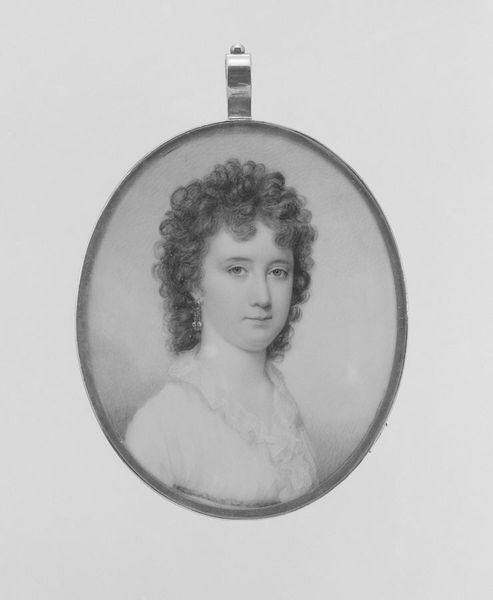
painting, watercolor
#
portrait
#
neoclassicism
#
painting
#
oil painting
#
watercolor
#
intimism
#
classicism
#
miniature
#
watercolor
Dimensions: 2 1/4 x1 3/4 in. (5.7 x 4.3 cm)
Copyright: Public Domain
Curator: Here we have a neoclassical miniature portrait titled "Clarissa Storrs," believed to have been created by William Verstille between 1792 and 1795. It’s currently held at the Metropolitan Museum of Art. Editor: It's striking. A delicate piece. The blues in the background give her such a soft glow. The craftsmanship appears meticulous, particularly given the diminutive scale. Curator: Indeed. The formal qualities align with neoclassicism. Notice the oval composition, emphasizing balance and idealized representation of the sitter, as evidenced by her serene countenance. We might interpret the background hues as reflecting a controlled and refined era. Editor: But consider the labor involved in creating such detail at this size, especially when crafted by hand. The type of brush and the pigment mixing would have been crucial. Look closely, one can see the layers of watercolor applied meticulously onto probably an ivory support. This piece also acted as a sort of commodity that allowed Storrs to declare her belonging in the upper class, further enforcing class distinctions through portable portraiture. Curator: Certainly. Though the labor is embedded within the artwork's final form, and that itself expresses ideas—Verstille is manipulating material to establish formal perfection, achieving visual harmony. I would argue the soft lighting on Storrs' face is also suggestive of the era’s aesthetic values, drawing on the themes of virtue and the idyllic beauty of simplicity that neoclassicism espoused in that moment of Enlightenment's transformation to new systems. Editor: The choice of watercolor—relatively affordable and easily transportable—also made miniature portraiture a widespread phenomenon and this piece allows one to engage with these notions of accessible portraiture and expanding audiences. One might wonder about the story of materials and the labor which goes into creating these class markers that now exist at The Met. Curator: I would argue, the emphasis falls upon Verstille’s handiwork to demonstrate intellectual order rather than solely class distinctions through raw materials and production; we see this emphasis again echoed and valorized within the piece. Editor: Point taken. It’s in viewing the process and purpose as interlinked, a beautiful dialogue can emerge between skill, material, intention, and representation, that help the artwork's themes begin to resonate. Curator: Ultimately, the miniature draws us to consider how form and the values of classicism and neoclassicism played with, and continue to play with, the representation of women. Editor: Absolutely. And what that representation tells us about material culture, about status, and even about the physical and intellectual labor of the artist.
Comments
No comments
Be the first to comment and join the conversation on the ultimate creative platform.
